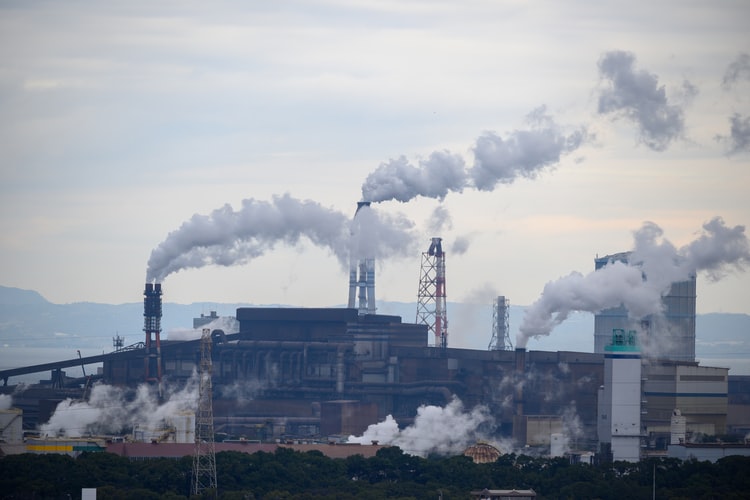Air pollution has been responsible for 11,000 deaths per year at the moment and is expected to rise as the population continues to age. It is also estimated that more than 160,000 people could die over the next decade from strokes and heart attacks caused by air pollution, which is equivalent of more than 40 heart and circulatory disease deaths related to air pollution every day.
The numbers are huge and indeed a concern for the whole world. This has forced the industry to take action in order to lower the risk to inhabitants. A team of computer scientists from Loughborough University in the UK have developed a new AI system that predicts air pollution levels days in advance. The team claims that the system provides new insight into the environmental factors that have significant impacts on air pollution levels. It analyses air data through sensors installed in cities to predict the pollution levels. Such a system is novel for a lot of causes — it can help us understand the environmental factors that affect one of the most dangerous pollutants in the world.
According to researchers, the system focuses on the amount of ‘PM2.5’ particulates in the air, that is a particulate matter of less than 2.5 micrometres in diameter — about 3% the size of a human hair, and is often characterised as causing reduced visibility in cities and hazy-looking air when levels are high.
Explaining further the researchers said that particulate matter is a sort of air pollutant and PM2.5 particulates were found to be particularly deadly. It can also create a 36 per cent increase in lung cancer per 10 μg/m3 as they can penetrate deep into the lungs and then bloodstream, because of their small size. Worldwide, it has contributed to 4.1 million deaths from several associated problems of air pollution such as heart disease and stroke, lung cancer, chronic lung disease, and respiratory infections in 2016.
Developing & Training The System
While there are researches and systems already existed to predict this deadly particulate matter, however, the LU team took the technology to an advanced level.
According to the team of researchers, the system can predict PM2.5 levels in advance — i.e. giving predictions for the levels in one hour to several hours’ time, plus 1-2 days ahead. What more — it can interpret the various factors and data used for prediction, which could lead to a better understanding of the weather, seasonal and environmental factors that can impact PM2.5. Apart from that, not only it predicts one figure, it also predicts the PM2.5 level plus a range of values the air pollution reading could fall within — known as ‘uncertainty analysis’. The novel system has the capabilities to be used as an air pollution analysis tool in a carbon credit trading system, stated the team.
Dr Yuanlin Li, one of the research associates of the project said, “The LU team created the system using machine learning — a type of artificial intelligence technology that uses large amounts of data to learn rules and features so that a system can make predictions.”
Such an advanced system could help policymakers and scientists understand what causes these levels of air pollution and explore ways to reduce them by interpreting the weather, seasonal and environmental data used in its prediction.
To train the system, the team used public historical data on air pollution in Beijing and then tested the algorithms. The team selected ‘China’ as the targeted region, as Chinese cities have serious air pollution problems. And therefore, the trained system is being tested on live data captured by sensors deployed in Shenzhen, China.
Figure: Prediction uncertainty analysis. The green line denotes the actual PM2.5 levels measured from the sensor, and the blue line denotes the system’s PM2.5 prediction. The red lines outline the probability range the system believes the levels will fall within.
Air pollution has been a long-term accumulated challenge, a concern for the whole world, especially in many developing countries. Therefore, “this project aims to measure and forecast air quality and pollution levels,” said Professor Meng, another research associate of the project. “We also explore the feasibility of working with real-time information on carbon emission to end-to-end carbon credit trading, thus aiming to reduce both carbon control and greenhouse gas emission.” The research hopes to help in leading cleaner air for the community and improving people’s health in the future.”
For A Better Tomorrow
This enormity of air pollution has always been a matter of immense concern for the whole world. India, in fact, is currently facing one of the highest disease burdens from air pollution in the world, with an estimated 100% of the population living in areas with PM2.5 concentrations.
In such a situation, this novel system from the LU university could be a vital enabler to curb pollution. With the advanced system, scientists will be able to predict the declining air pollution level days in advance, pinpointing the numerous factors that are contributing to this issue, and ultimately, reducing it. And doing this over some time will allow the scientists to measure the pollution in advance with predictive analysis.
The system developed at Loughborough University is part of a more comprehensive research project funded by the Newton Fund, consisting of four partners — Satoshi Systems; The LU team; Shenzhen Institutes of Advanced Technology; and EEG Smart Intelligent Technology in China.
Saurabh Goyal, the CEO of Satoshi Systems, said, “All types of participants such as polluters, cleaners, market makers, hedgers, speculators, government and policymakers will find this data very useful before they buy or sell carbon credits on our platform. We are currently under discussions with governmental and civic authorities in both China as well as the UK to set up the exchange.
Only by understanding the fundamental social transformations and by involving our communities in defining the way forward, we will be able to drive these unique technological innovations for a better future. Armed with artificial intelligence, companies can surely help the world breathe better.





















































































